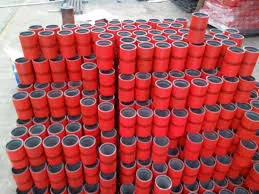- Afrikaans
- Albanian
- Amharic
- Arabic
- Armenian
- Azerbaijani
- Basque
- Belarusian
- Bengali
- Bosnian
- Bulgarian
- Catalan
- Cebuano
- Corsican
- Croatian
- Czech
- Danish
- Dutch
- English
- Esperanto
- Estonian
- Finnish
- French
- Frisian
- Galician
- Georgian
- German
- Greek
- Gujarati
- Haitian Creole
- hausa
- hawaiian
- Hebrew
- Hindi
- Miao
- Hungarian
- Icelandic
- igbo
- Indonesian
- irish
- Italian
- Japanese
- Javanese
- Kannada
- kazakh
- Khmer
- Rwandese
- Korean
- Kurdish
- Kyrgyz
- Lao
- Latin
- Latvian
- Lithuanian
- Luxembourgish
- Macedonian
- Malgashi
- Malay
- Malayalam
- Maltese
- Maori
- Marathi
- Mongolian
- Myanmar
- Nepali
- Norwegian
- Norwegian
- Occitan
- Pashto
- Persian
- Polish
- Portuguese
- Punjabi
- Romanian
- Russian
- Samoan
- Scottish Gaelic
- Serbian
- Sesotho
- Shona
- Sindhi
- Sinhala
- Slovak
- Slovenian
- Somali
- Spanish
- Sundanese
- Swahili
- Swedish
- Tagalog
- Tajik
- Tamil
- Tatar
- Telugu
- Thai
- Turkish
- Turkmen
- Ukrainian
- Urdu
- Uighur
- Uzbek
- Vietnamese
- Welsh
- Bantu
- Yiddish
- Yoruba
- Zulu
petroleum tubing coupling
Understanding Petroleum Tubing Couplings An Essential Component in Oil and Gas Operations
In the petroleum industry, the extraction of hydrocarbons from deep beneath the Earth's surface is a complex process that relies heavily on the use of specialized equipment. Among these components, petroleum tubing couplings play a crucial role in ensuring the efficiency and integrity of oil and gas operations. This article will explore the importance, types, manufacturing processes, and maintenance considerations associated with petroleum tubing couplings.
What are Petroleum Tubing Couplings?
Petroleum tubing couplings are threaded connectors used to join segments of tubing, which is a series of pipes that transport oil and gas from the production zone to the surface facilities. The tubing is typically made of steel and is designed to withstand high pressures and corrosive environments found in subsurface operations. Couplings serve as the link between these tubing sections, allowing for an effective and sealed connection.
Importance of Tubing Couplings in Oil Extraction
The importance of tubing couplings cannot be overstated. They are integral in maintaining the structural integrity of the entire tubing system. Properly installed couplings ensure that there is minimal leakage, reducing the risk of environmental contamination and loss of product. Moreover, they help to manage the pressure within the tubing, which is critical for the safe and efficient extraction of oil and gas.
In addition to promoting safety, tubing couplings are vital for operational efficiency. The ability to easily connect and disconnect sections of tubing allows crews to perform maintenance, repairs, or replacements without significant downtime. This flexibility is crucial in a sector where time is money, and operational interruptions can lead to substantial financial losses.
Types of Petroleum Tubing Couplings
There are various types of petroleum tubing couplings, each designed for specific applications
. The two main categories are1. Conventional Couplings These are standard connections that use a threaded design to join tubing segments. They are widely used due to their simplicity and ease of installation but may not provide the highest sealing capabilities under extreme conditions.
petroleum tubing coupling

2. Premium Couplings These couplings offer enhanced performance features, including superior sealing and resistance to bending stresses. They are often used in high-pressure environments or wells with complex geological formations that exert additional strain on the tubing.
Manufacturing Process
The manufacturing process of petroleum tubing couplings involves several critical steps. Initially, high-quality steel is selected to ensure strength and durability. The raw material undergoes processes like forging, machining, and heat treatment to achieve the desired properties.
Machining involves precisely cutting the threads that will connect the couplings to the tubing sections. This process is critical, as improper threading can lead to leakage or failure under pressure. Once manufactured, each coupling is rigorously tested for quality assurance, including checks for dimensional accuracy, tensile strength, and resistance to corrosion.
Maintenance and Inspection Considerations
Proper maintenance and regular inspection of tubing couplings are essential to prevent failures during operation. Operators should routinely check for signs of wear, corrosion, or thread damage. Proper lubrication and the use of thread compounds can help extend the life of couplings and ensure they maintain a tight seal.
In addition, operators must be trained in the correct installation techniques for couplings. Misaligned or over-tightened couplings can lead to catastrophic failures, which underscore the importance of skilled personnel in the oil and gas sector.
Conclusion
In summary, petroleum tubing couplings are a vital component in the successful extraction of hydrocarbons. Their ability to securely join tubing sections while managing pressure and preventing leaks plays a significant role in the overall efficiency and safety of oil and gas operations. As technology advances, the development of new materials and designs will likely continue to improve the performance of these essential components, ensuring a reliable and sustainable energy future. Understanding their importance and function is paramount for anyone involved in the petroleum industry.
-
Well Casing Extension Couplings – Applications and InstallationNewsJun.06,2025
-
Types of Crossover Subs in Drilling & CompletionNewsJun.06,2025
-
Key Features of High-Quality Tubing Pup JointsNewsJun.06,2025
-
Installation and Maintenance Tips for Steel Couplings for PipeNewsJun.06,2025
-
How to Select the Right Pup Joint for Oil & Gas OperationsNewsJun.06,2025
-
Applications of Stainless Steel Pipe CouplingsNewsJun.06,2025







